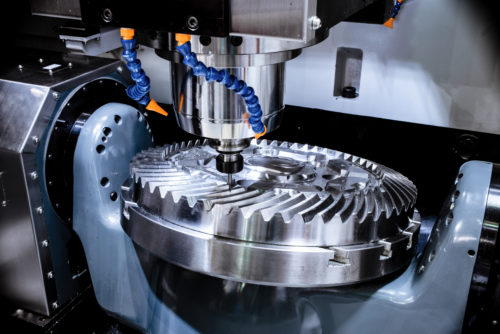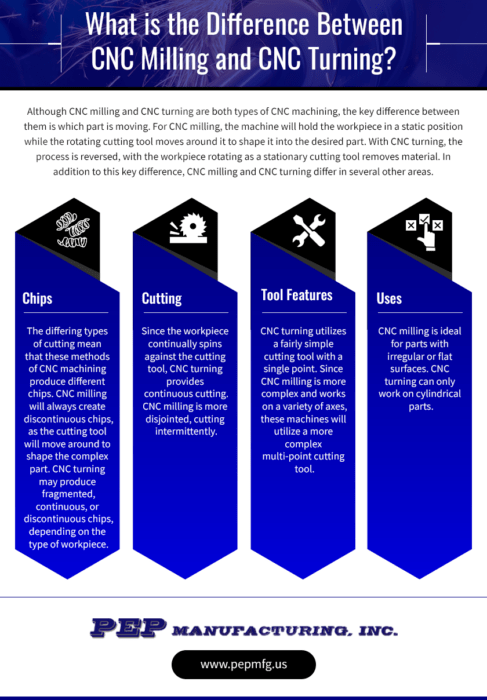Although CNC milling and CNC turning have similarities, they are very different processes relying on different types of equipment and tooling. Understanding the differences between these two methods of CNC machining will help you to determine which method will best suit your project.
What is CNC Milling?
A mill holds the workpiece in place while moving rotating cutting implements around it to remove material in accordance with a specified design. Depending on the capabilities of the specific machine, CNC milling machines can work on up to five axes and often conduct numerous operations simultaneously. Since the tooling can move in multiple directions, it can provide more dimension to a workpiece.
Its versatility makes CNC milling the optimal choice when machining complex components that require a high level of detail. Parts that benefit from CNC milling include:
- Engine parts
- Enclosures
- Custom tooling
- Intricate mechanisms
This type of machining may make use of a range of different tools depending on the properties of the workpiece. Each tool enables a different type of cutting method, such as face milling, end milling, or hollow milling.
What is CNC Turning?
CNC turning will mounts the workpiece horizontally or vertically, depending on the specific machine and the details of the workpiece. The workpiece rotates at high speeds while the machine’s tooling moves along its length to shave excess material from the part. The workpiece is held firmly in place by a chuck and may spin at different speeds depending on the operation being performed.
While CNC milling works well for complex parts, CNC turning is better suited for creating cylindrical, axially symmetrical parts. Components that may benefit from CNC turning include the following:
- Conical shapes
- Shafts
- Custom hollow tools
- Rods
The Difference Between CNC Milling and CNC Turning
Although CNC milling and CNC turning are both types of CNC machining, the key difference between them is which part is moving. For CNC milling, the machine will hold the workpiece in a static position while the rotating cutting tool moves around it to shape it into the desired part. With CNC turning, the process is reversed, with the workpiece rotating as a stationary cutting tool removes material. In addition to this key difference, CNC milling and CNC turning differ in several other areas.
- Chips. The differing types of cutting mean that these methods of CNC machining produce different chips. CNC milling will always create discontinuous chips, as the cutting tool will move around to shape the complex part. CNC turning may produce fragmented, continuous, or discontinuous chips, depending on the type of workpiece.
- Cutting. Since the workpiece continually spins against the cutting tool, CNC turning provides continuous cutting. CNC milling is more disjointed, cutting intermittently.
- Tool features. CNC turning utilizes a fairly simple cutting tool with a single point. Since CNC milling is more complex and works on a variety of axes, these machines will utilize a more complex multi-point cutting tool.
- Uses. CNC milling is ideal for parts with irregular or flat surfaces. CNC turning can only work on cylindrical parts.
CNC Machining Solutions from PEP Manufacturing
Since 1997, PEP Manufacturing has been providing our customers with high-quality machining solutions. To learn more about how we can meet your CNC machining needs, request your quote today.



